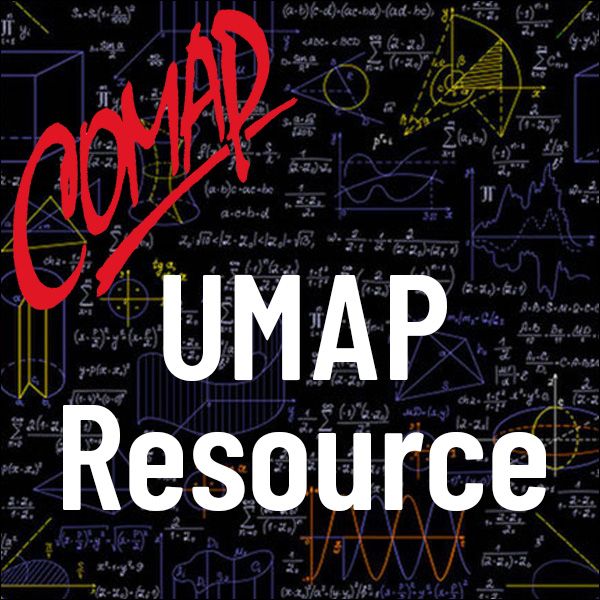The Mathematical Modeling Process With Eggs
Author: Eric Marland, Amanda Beecher & Jessica Hawks
The value of mathematical modeling has been lauded for many years, but in classes there is a tendency to spend more time on the models than on the modeling. We explore a very simple question about eggs to remind ourselves of the joy of the process. Modeling can inspire us to learn mathematics and to ask mathematical questions about the world around us. It requires creativity throughout the process and a sense of reflection, especially when our answers don’t match our intuition. This paper offers one approach to showcase the value of modeling.
Note: The information below was created with the assistance of AI.
Level of Mathematics
The modeling activity is designed to be accessible across a wide educational spectrum, from upper elementary to college level:
-
Elementary & Middle School: Conceptually accessible through the simple question: “What is the best way to remove eggs from a carton?” The problem can be explored with intuition and visual reasoning.
-
High School: Students can apply algebraic thinking, basic geometry, and basic modeling principles (e.g., assumptions, variables).
-
College Level (Undergraduate Mathematics):
-
Use of center of mass (COM) formulas.
-
Concepts like discrete combinatorics, optimization, metrics (e.g., taxicab vs. Euclidean distance), and statistical measures (e.g., standard deviation).
-
References to simulated annealing, genetic algorithms, and lattice/graph representations.
-
Thus, the paper is most appropriate for:
-
Late high school students in advanced mathematics courses.
-
Undergraduate students in courses involving mathematical modeling, precalculus, calculus, or introductory applied mathematics.
Application Areas
This modeling task touches multiple application domains:
-
Physics/Engineering: Through the concept of balance and center of mass.
-
Operations Research & Optimization: Modeling removal order to achieve least variation or best balance.
-
Education: Aimed at training future mathematics educators in teaching modeling.
-
Consumer Product Design: Demonstrates real-life application using an egg carton scenario and ends with a real-world solution via a commercial product (YouCopia RollDown Egg Dispenser, p. 165).
Prerequisites
To engage with the full depth of the activity, students should be familiar with:
-
Basic Algebra & Arithmetic – manipulating expressions, understanding averages.
-
Geometry – understanding coordinate systems, spatial reasoning.
-
Functions & Graphs – particularly for plotting and analyzing balance points.
-
Center of Mass – as introduced in precalculus or physics.
-
Basic Statistics – especially mean and standard deviation for modeling variation.
-
Computational Tools – (optional but helpful) for simulation or random sampling (e.g., Python, Excel, or calculators).
For younger or less advanced students, the modeling task can be simplified to focus on logical reasoning and visual strategies without technical computation.
Subject Matter
The core subject is mathematical modeling, with focus areas including:
-
Modeling Process: Problem definition, scoping, assumption-making, modeling, evaluation, and iteration.
-
Discrete Mathematics: Set operations, permutations, and lattice/graph structures (Figure 2, p. 154).
-
Measurement & Metrics: Euclidean and taxicab distance, balance calculations.
-
Statistical Variation: Least variation strategy using standard deviation (p. 161).
-
Real-World Modeling: How physical and structural constraints inform mathematical strategies.
The problem is open-ended, encouraging creative exploration, multiple definitions of “best,” and an iterative problem-solving process.
Correlation to Mathematics Standards
The paper aligns strongly with key educational standards and frameworks, notably:
Common Core State Standards for Mathematics (CCSSM)
-
High School — Modeling (★): The problem is rooted in the CCSSM's emphasis on applying mathematics to real-world problems. The authors explicitly reference the 2010 introduction of modeling into standards (p. 147).
-
★N-Q.1: Use units to understand problems.
-
★F-IF.4–7: Interpreting functions in context.
-
★S-ID.2–3: Summarize, represent, and interpret data.
-
★S-ID.6a: Fit a function to data.
-
★Modeling Standard (CCSS.Math.Practice.MP4)**: Model with mathematics.
-
Mathematical Practice Standards
The activity deeply supports the Standards for Mathematical Practice (SMPs):
-
MP1: Make sense of problems and persevere.
-
MP2: Reason abstractly and quantitatively.
-
MP3: Construct viable arguments and critique reasoning.
-
MP4: Model with mathematics.
-
MP6: Attend to precision.
-
MP7: Look for and make use of structure.
GAIMME Guidelines
The paper explicitly aligns with the Guidelines for Assessment and Instruction in Mathematical Modeling Education (GAIMME) by COMAP and SIAM. Modeling is viewed as a cycle, not just a one-shot solution process. (Referenced on p. 165 and 166.)

Mathematics Topics:
Application Areas:
You must have a Full Membership to download this resource.
If you're already a member, login here.